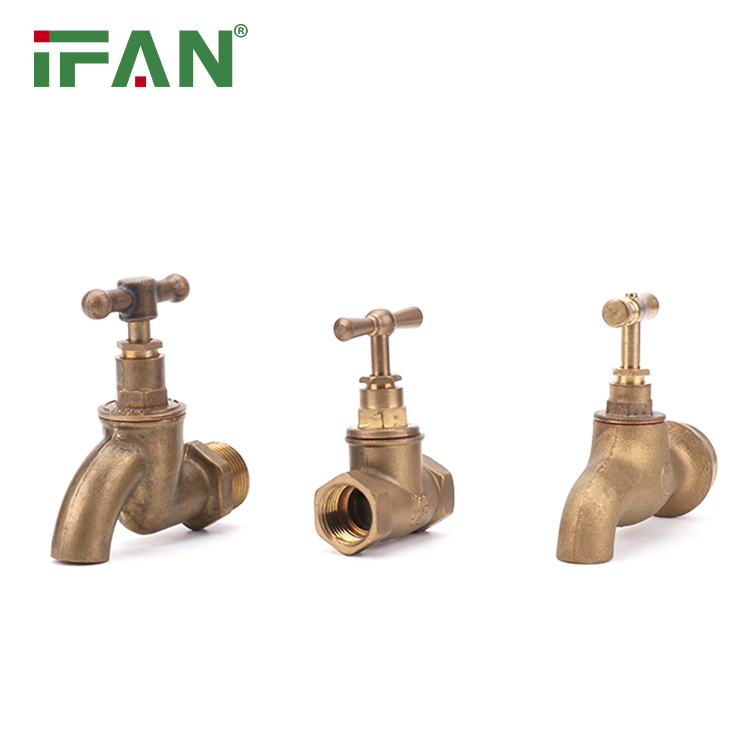Description
Introduction
A water tap, also known as a faucet or a spigot, is a device used to control the flow of water from a plumbing system. It is a common fixture found in households, commercial buildings, and public spaces. In this article, we will explore the different types of water taps, their components, and their functions.

Components of a Water Tap
A typical water tap consists of several components that work together to control the flow of water. These components include:
Handle or Knob: The handle or knob is used to turn the water tap on or off. It is usually located at the top of the tap and can be rotated or pushed/pulled to control the flow of water.
Spout: The spout is the outlet through which the water flows. It is typically located at the end of the tap and projects outwards to allow easy access to the flowing water.
Cartridge or Valve: The cartridge or valve is the internal mechanism that regulates the flow of water. It is responsible for controlling the opening and closing of the water passage and may include components such as O-rings, seals, and washers to prevent leaks.
Aerator: The aerator is a small screen-like device located at the end of the spout. It mixes air with the water, resulting in a steady flow and reducing splashing. The aerator also helps to conserve water by restricting the flow rate.
Inlet Connections: The water tap is connected to the plumbing system through inlet connections. These connections may vary depending on the type of tap, but they generally involve threaded or compression fittings that secure the tap to the water supply lines.
Types of Water Taps
There are various types of water taps available, each with its unique design and functionality. Some common types include:
Compression Taps: Compression taps are the most traditional type of tap. They have separate hot and cold handles that need to be turned in opposite directions to control the flow of water. Inside the tap, a rubber washer is compressed against a valve seat to stop the flow when the handle is closed. These taps may require periodic replacement of the washers to prevent leaks.
Ball Taps: Ball taps use a single lever or handle to control both the temperature and flow of water. Inside the tap, a ball-shaped valve with openings and channels controls the flow by pivoting within the tap body. Ball taps are known for their durability and ease of use.

Ceramic Disc Taps: Ceramic disc taps use ceramic discs or plates to control the flow of water. These discs move against each other in a shearing action, regulating the water flow. Ceramic disc taps are known for their smooth operation, longevity, and resistance to leaks.
Cartridge Taps: Cartridge taps use a replaceable cartridge as the valve mechanism. The cartridge can be made from various materials such as ceramic or brass and can come in different styles, such as single-handle or two-handle variants. Cartridge taps offer precise control over the water flow and temperature.
Sensor-Operated Taps: Sensor-operated taps, also known as touchless or automatic taps, use sensors to detect the presence of hands or objects and automatically activate the water flow. These taps are commonly found in public restrooms and are popular for their hygiene benefits and water-saving capabilities.
Functions and Features
Water taps serve several essential functions and can come with various features, including:
Temperature Control: Water taps allow users to adjust the temperature of the water by mixing hot and cold water streams. This is typically done by turning separate handles or a single lever to achieve the desired temperature.
Flow Control: Water taps enable users to control the flow rate of water. This can be achieved by adjusting the handle or lever to increase or decrease the water flow.
Water Conservation: Many modern water taps are designed with water-saving features such as aerators or flow restrictors. These features help reduce water consumption without compromising on functionality.
Design and Style: Water taps come in a wide range of designs, finishes, and styles to suit various aesthetics and interior design preferences. From traditional to contemporary, there are taps available to complement any decor.
Additional Features: Some water taps may come with additional features such as pull-out or pull-down sprayers, built-in water filters, or integrated LED lights for visual indicators of water temperature.
Conclusion
Water taps are essential fixtures in plumbing systems, providing control over the flow and temperature of water. They come in various types, including compression taps, ball taps, ceramic disc taps, cartridge taps, and sensor-operated taps, each offering unique benefits and functionalities. Water taps consist of components such as handles, spouts, cartridges, and aerators, which work together to regulate the water flow. Additionally, water taps may come with features such as temperature control, flow control, water conservation mechanisms, and various design options. Whether in residential, commercial, or public settings, water taps play a crucial role in providing convenient and accessible water usage.
Related products
-
Others
Plastic Bidet Sprayer
-
Others
Clamp Saddle
-
Others
PPR Plastic Union
-
Others
Floor Heating Manifolds













